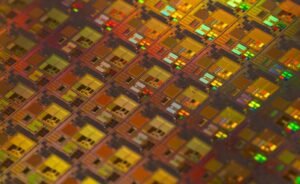Introduction:
Deep learning is a subset of machine learning that focuses on artificial neural networks with multiple layers. It has gained widespread attention in recent years due to its ability to solve complex problems in various domains. This article explores key research topics in deep learning, providing insights into current trends and exciting opportunities for further exploration.
Key Takeaways:
– Deep learning is a subset of machine learning that uses artificial neural networks with multiple layers.
– It has gained significant popularity due to its ability to solve complex problems in diverse domains.
– Current research in deep learning focuses on topics such as generative models, transfer learning, and interpretability.
– Deep learning can greatly benefit from advancements in areas like reinforcement learning and multi-modal learning.
Generative Models:
Generative models in deep learning aim to learn and replicate data distributions to generate new samples. This includes techniques such as variational autoencoders (VAEs) and generative adversarial networks (GANs). Researchers are exploring ways to improve the quality and diversity of generated samples, enabling applications in domains like image synthesis and data augmentation.
*Interesting sentence: “Generative models allow for the creation of artificial data samples by learning from existing data distributions.”*
Transfer Learning:
Transfer learning involves training deep learning models on one task and then utilizing the knowledge gained to improve performance on another related task. It reduces the need for large amounts of labeled data and enables models to generalize better across different domains. Current research focuses on developing effective transfer learning techniques, including domain adaptation and fine-tuning strategies.
Interpretability:
As deep learning models become more complex, understanding their decision-making processes becomes increasingly important. *Interpretability* techniques allow researchers and practitioners to explain why and how a model makes particular predictions. This includes methods like attention mechanisms, feature visualization, and explanation generation, enabling better transparency and trust in deep learning systems.
Advancements in Reinforcement Learning:
Reinforcement learning, a branch of machine learning, focuses on training agents to maximize rewards within an environment. Recent advancements in deep reinforcement learning, combining deep neural networks with reinforcement learning algorithms, have led to significant breakthroughs in areas like game playing (e.g., AlphaGo) and robotics. Ongoing research explores new algorithms and techniques to improve the efficiency and sample complexity of deep reinforcement learning.
Multi-Modal Learning:
Multi-modal learning deals with the fusion and understanding of information from multiple input modalities such as text, images, and audio. This field has the potential to unlock remarkable advancements across various domains by leveraging the complementary nature of different modalities. Researchers are developing models that can effectively capture and utilize information from diverse sources, enabling applications like text-to-image synthesis and audio-visual scene understanding.
Tables:
Below are three tables showcasing interesting data points and informative comparisons.
Table 1: Comparing Generative Models
| Model | Strengths | Applications |
|———————-|————————————-|————————————-|
| Variational Autoencoder (VAE) | Probabilistic modeling, latent spaces | Image synthesis, data compression |
| Generative Adversarial Network (GAN) | High-quality samples, natural image generation | Image synthesis, data augmentation |
| Autoregressive Models | Pixel-level precision, parallel generation | Image completion, text generation |
Table 2: Recent Advances in Transfer Learning
| Technique | Description | Applications |
|—————-|————————————————————|—————————————–|
| Domain Adaptation | Adapts a model trained on one domain to perform well on another | Image classification, sentiment analysis |
| Few-Shot Learning | Learns to generalize from a small number of labeled examples | Object recognition, text classification |
| Meta-Learning | Learns how to quickly adapt to new tasks given prior experience | Reinforcement learning, optimization |
Table 3: Applications of Multi-Modal Learning
| Modality Combination | Applications |
|———————-|————————————————————|
| Text + Image | Text-to-image synthesis, image captioning, visual question answering |
| Audio + Text | Speech recognition, machine translation, audio captioning |
| Image + Depth | 3D perception, object localization, augmented reality |
Conclusion:
Research in deep learning is continuously evolving, with a focus on generative models, transfer learning, interpretability, reinforcement learning, and multi-modal learning. As new techniques and breakthroughs emerge, the potential for solving complex problems and advancing technology across various domains continues to expand. The field of deep learning remains rich with opportunities for researchers and practitioners alike.

Common Misconceptions
Misconception 1: Deep Learning can solve any problem
One of the biggest misconceptions about deep learning is that it can solve any problem thrown at it. While deep learning has shown impressive results in various domains, it is not a magic solution that can tackle every problem with perfection. It is important to understand that deep learning requires huge amounts of data and computational resources, and may not be suitable for all types of problems.
- Deep learning is not suitable for problems with limited or insufficient data.
- Some problems may require domain expertise that deep learning alone cannot provide.
- Deep learning models can still suffer from issues like overfitting and underfitting.
Misconception 2: Deep learning is the same as machine learning
Another common misconception is that deep learning and machine learning are the same thing. While deep learning is a subfield of machine learning, they are not interchangeable terms. Machine learning refers to the broader concept of algorithms that can learn and make predictions from data, while deep learning specifically focuses on creating artificial neural networks with multiple layers to learn representations of data.
- Deep learning relies heavily on neural networks with multiple layers, while machine learning encompasses a wider range of algorithms.
- Deep learning requires large amounts of labeled data, whereas machine learning algorithms can work with smaller datasets too.
- Deep learning models typically require more computational resources to train compared to traditional machine learning algorithms.
Misconception 3: Deep learning models are infallible
Another misconception is that deep learning models are infallible and produce error-free results. While deep learning models have shown remarkable accuracy in various tasks, they are not immune to errors and limitations. It is essential to consider the potential shortcomings of deep learning models and critically evaluate their outputs.
- Deep learning models can exhibit biases and prejudices present in the training data.
- Models can be prone to overgeneralization and may not perform well on unseen data.
- Deep learning models can be sensitive to noise in the input data and produce unreliable results.
Misconception 4: Deep learning requires no human intervention
Some people believe that deep learning models can work completely autonomously without any human intervention. While deep learning algorithms can learn from data and make predictions without explicit programming, they still require human involvement at various stages of the process.
- Human expertise is needed to define the objectives and tasks for deep learning models.
- Data preprocessing and cleaning tasks require human intervention to ensure quality and integrity.
- Model selection, parameter tuning, and performance evaluation often need human guidance and judgment.
Misconception 5: Deep learning will lead to mass unemployment
There is a fear that deep learning advancements will lead to mass unemployment as machines take over human jobs. However, this is an exaggerated misconception. While deep learning may automate certain tasks, it also has the potential to generate new opportunities and transform industries.
- Deep learning can enhance human capabilities and assist in decision-making processes.
- New jobs can be created in areas such as data preparation, model interpretation, and system integration.
- Deep learning can enable the development of innovative products and services, opening up new markets and industries.

The Importance of Deep Learning Research
In recent years, deep learning has revolutionized the fields of artificial intelligence and machine learning. This innovative approach utilizes neural networks with multiple layers to process vast amounts of data, leading to a wide range of applications. Below are ten fascinating research topics within deep learning that are shaping the future of these fields.
1. Predictive Maintenance in Manufacturing
Deep learning has proven highly effective in predicting equipment failure in manufacturing plants. By analyzing sensor data, it can accurately identify patterns and anomalies, allowing for predictive maintenance and minimizing downtime.
2. Autonomous Vehicles and Traffic Management
Researchers are using deep learning algorithms to improve the perception and decision-making capabilities of autonomous vehicles. These technologies not only enhance safety but also have the potential to transform traffic management systems to ensure seamless transportation.
3. Medical Diagnosis and Prognosis
Deep learning is increasingly applied to medical imaging, assisting in the diagnosis of diseases such as cancer. Through the analysis of large datasets, deep learning models can improve accuracy and efficiency while providing insights into prognosis and treatment options.
4. Natural Language Processing and Sentiment Analysis
In the realm of natural language processing, deep learning algorithms have made significant progress in language translation, sentiment analysis, and speech recognition. These advancements have enabled more sophisticated interactions between humans and machines.
5. Generative Adversarial Networks (GANs)
GANs are a unique deep learning technique where two neural networks compete against each other. The generator network generates new data instances, while the discriminator network tries to distinguish them from real data. This approach has led to advancements in data augmentation, image synthesis, and even deepfake detection.
6. Reinforcement Learning for Game AI
Deep reinforcement learning algorithms have demonstrated exceptional performance in various complex games. From beating world champions in strategy games to mastering complex Atari games, reinforcement learning holds the promise of creating highly adaptive AI agents.
7. Time Series Analysis and Forecasting
Deep learning has shown substantial progress in time series analysis, enabling accurate forecasting and anomaly detection. With its ability to capture temporal dependencies, it has applications in diverse fields such as finance, energy, and weather prediction.
8. Deep Learning in Robotics
By incorporating deep learning techniques, robots can learn from their experiences and improve their capabilities. Deep learning algorithms enable robots to recognize objects, navigate complex environments, and even perform intricate tasks such as manipulation and grasping.
9. Deep Learning for Drug Discovery
The pharmaceutical industry can greatly benefit from deep learning research. By leveraging the power of neural networks, scientists can accelerate the process of drug discovery through virtual screening, molecular property prediction, and simulating their interactions with biological targets.
10. Deep Learning for Human Pose Estimation
Deep learning is advancing the accuracy and speed of human pose estimation, which has applications in fields like motion capture, sports analysis, and ergonomics. These technologies allow for more precise tracking of human movements, leading to improvements in various domains.
Overall, deep learning research continually pushes the boundaries of what is possible with artificial intelligence and machine learning. Through the applications mentioned above and countless others, deep learning algorithms are transforming industries and opening new avenues for innovation.
Deep Learning Research Topics – Frequently Asked Questions
What are the different types of deep learning architectures?
Deep learning architectures include Convolutional Neural Networks (CNN), Recurrent Neural Networks (RNN), Generative Adversarial Networks (GAN), and Self-Organizing Maps (SOM), among others. Each architecture has its own characteristics and is suited for specific tasks.
How does deep learning differ from traditional machine learning?
Deep learning uses neural networks with multiple layers to automatically learn hierarchical representations of data, whereas traditional machine learning algorithms rely on feature engineering and explicit programming. Deep learning models have the ability to learn complex patterns and extract high-level features directly from raw data.
What are some applications of deep learning in image recognition?
Deep learning has been successfully applied to image recognition tasks such as object detection, image classification, and image segmentation. It has found application in autonomous vehicles, medical imaging, surveillance systems, and facial recognition technologies.
How can deep learning be used in natural language processing?
Deep learning can be employed in natural language processing (NLP) tasks such as sentiment analysis, text classification, named entity recognition, and machine translation. Recurrent Neural Networks (RNN) and Attention Mechanisms are commonly used architectures for NLP tasks.
What are some challenges in training deep learning models?
Training deep learning models can be computationally expensive and requires large amounts of annotated data. Overfitting and instability during training are also common challenges. Hyperparameter tuning and regularization techniques such as dropout and batch normalization can help mitigate these challenges.
What are the ethical considerations related to deep learning research?
Deep learning research raises ethical concerns around privacy, bias, and fairness. The misuse of deep learning technologies, such as deepfakes and automated surveillance systems, can have negative consequences. Ensuring transparency, accountability, and unbiased representation in datasets and algorithms is crucial.
What are some current trends in deep learning research?
Current trends in deep learning research include the exploration of meta-learning techniques, unsupervised deep learning, and reinforcement learning. Researchers are also investigating the interpretability and explainability of deep learning models to increase trust and understandability.
How can I get started with deep learning research?
To get started with deep learning research, it is recommended to have a strong foundation in mathematics and programming. Learning frameworks such as TensorFlow or PyTorch and understanding neural network architectures is essential. Exploring online courses, tutorials, and open-source libraries can provide valuable resources.
What are the future prospects of deep learning research?
The future of deep learning research looks promising, with continued advancements in areas such as multi-modal learning, reinforcement learning, and transfer learning. Deep learning is expected to have a significant impact on various fields, including healthcare, finance, and robotics.
Is deep learning the same as artificial intelligence (AI)?
No, deep learning is a subfield of AI that focuses on training neural networks with multiple layers to learn representations of data. AI encompasses a broader range of techniques and approaches to mimic human intelligence, which includes deep learning as a tool for solving complex problems.




